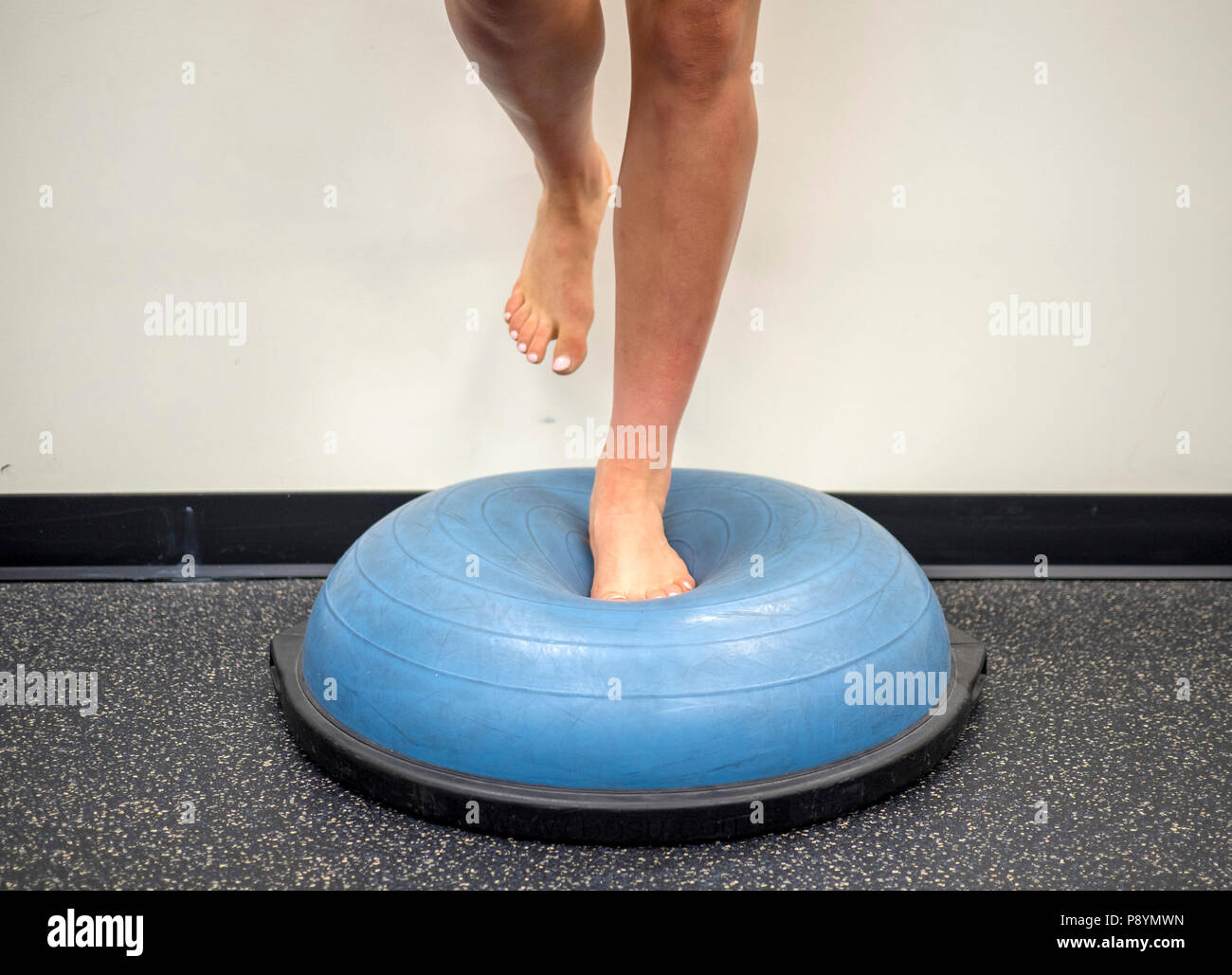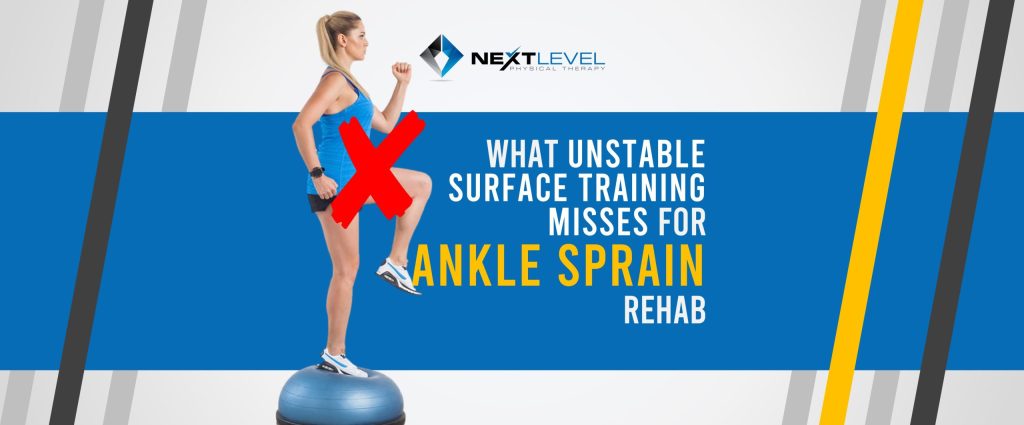Author: Dr. Colin Butler, DPT, ATC
Wobble No More: What Unstable Surface Training Misses for Ankle Sprain Rehab
The inversion ankle sprain is the most common injury in the entire world. Walking down the stairs, then missing a step, then… wham. Getting bumped in the air when going up for a lay-up, then landing on the outside of your foot… wham. Like we can see in Image 1 below, this injury that everyone has seen happens when a force is applied through the outside of the foot and ankle at a rate that the ligaments and soft tissues in the region can’t elastically rebound back from.

Like most new traumatic injuries, the damage to the bones, muscles, ligaments and tendons in the area draws in inflammation to start carting away the damaged anatomical materials and to start the healing process. Swelling comes along as a byproduct, and then slowly goes away as the acute phase of injury ends.
Once you get your full range of motion back in your ankle and foot, one of the most frequently used interventions is unstable surface training for the ankle. This involves standing on a surface that isn’t solid ground, like a foam pad, or a bosu ball, and maintaining your body’s orientation and foot contact on the surface.
The thinking is that the changing surface that you are standing upon will change the orientation of your ankle and center of gravity less predictably, forcing you to adjust and keep your foot on the surface and re-train your body awareness of not producing force on the outside of your foot and spraining your ankle again (Figure 2).

There’s nothing wrong with this method and thought process. It is important, especially if you are involved in competitive or recreational sports or athletics, to be able to quickly control perturbations of your body and be able to bring yourself back to a position where you can safely move from again.
The only issue here is transfer of training to the tasks you perform, and what you are trying to get out of doing the activity.
Nearly all sporting events are performed on solid surfaces (wooden basketball courts, artificial turf or grass fields, asphalt, or concrete) which do not yield in the same way that unstable surfaces do.
The yielding and “unstable” nature of unstable surfaces make it hard for you to get your ankle and the rest of your body into positions that are better at producing forces to slow yourself down faster and then change direction safely.
Clinically, I frequently find that individuals with recurrent ankle sprains struggle to be able to control the ability to get their ankle, foot, and hip in a position to produce internal rotation, which is a force down and into the ground. To be able to slow yourself down and control yourself when landing, you have to exert a force down into the ground over a longer period of time. To propel yourself in another direction to keep running or jumping, you need to produce another downward force (internal rotation) quickly to push away from the surface you are on.
If you continue trying to produce that downward force, but your foot and what’s above it are still positioned towards external rotation, the end result is that the direction of where your force to control yourself or push yourself away is still more towards the outside of your foot instead of right beneath it and that you’re not maximizing your training for reducing the likelihood of spraining your ankle. In this case, see how although this patient’s foot is on the ball, her shin is still oriented towards the outside of her body?
A good question is: how can we start retraining your ability to produce force right beneath your body instead of outside of it?
Our first step: getting good at the supine cross connect (video 1).
Video 1: Supine Cross Connect
In this activity, you start building the coordination to get your foot, knee, hip and ribcage lined up as you’re learning to press into the wall to retrain where and how you’re producing force. In this case, the wall simulates you pressing into the ground or the floor, you’re just laying on your back so it’s easier to do.
Once you can ace that, now we need to start retraining it standing up. A low step up cable chop is a great way to work on this.
Video 2: Low Step Up Cable Chop
In this exercise, your left leg is right beneath your body, and the chop of the cable or band is helping you to direct force right into the inside aspect of your left foot.
These exercises are just a couple examples of methods to retrain you being able to absorb and produce force without your bodyweight being oriented towards the outside of your body.
To really be prepared for sport, you need to continue training these principles at higher speeds, with greater amounts of force, and repeatedly without fatigue kicking in.
If you’ve tried unstable surface training and still feel like your ankle isn’t functioning as well as you’d like after an injury, give this kind of training a shot and let us know if you have any questions.



